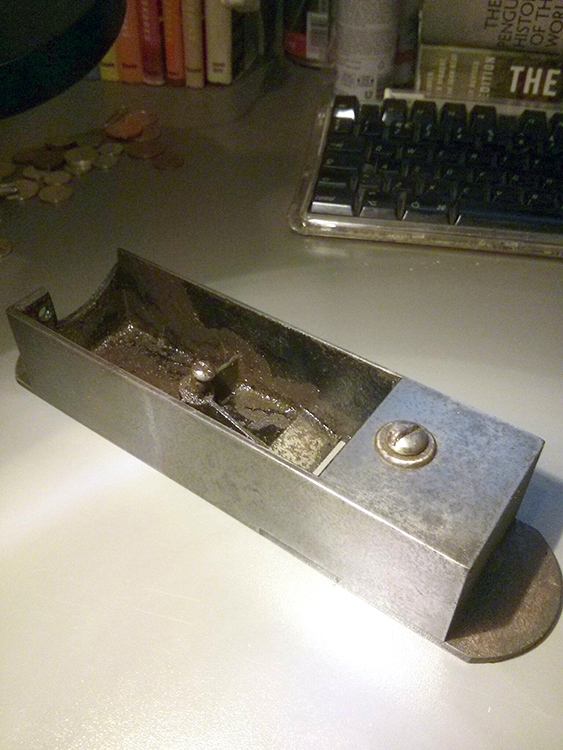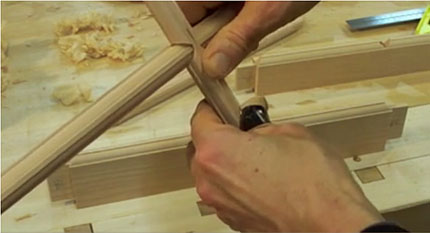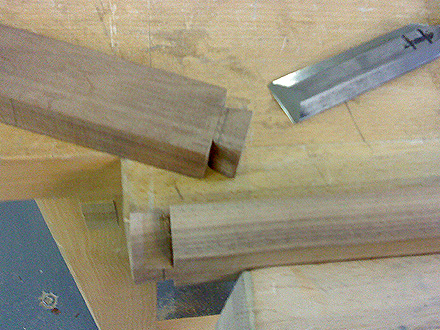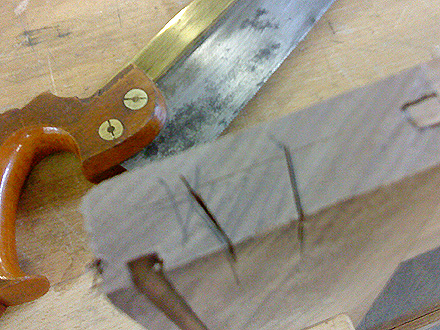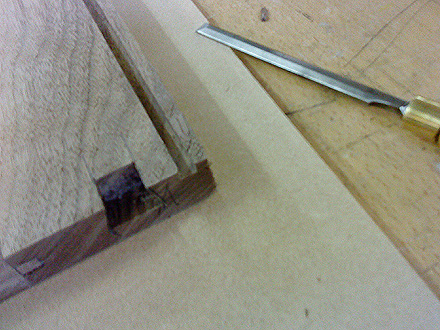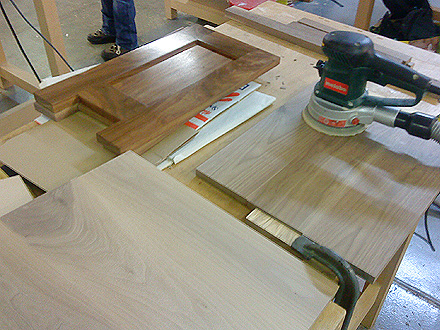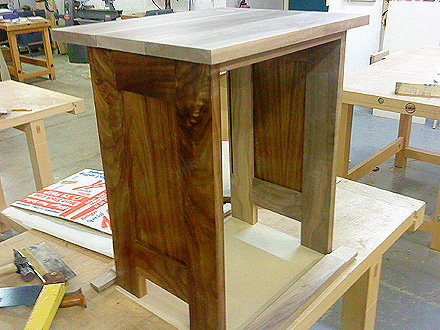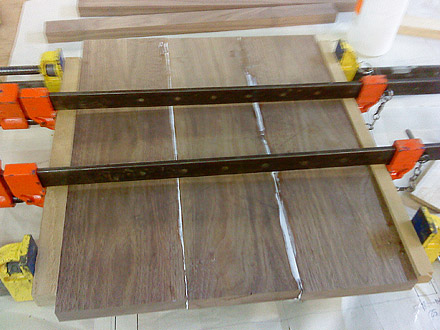A recent joinery job I was asked to do called for some beaded face frames on an alcove cabinet. This detail works particularly well as it creates a nice shadow break before the flat panel of the door, it’s a detail I see a lot on Victorian houses in London. Making the mitred corners isn’t too hard, but quite challenging if you are doing it for the first time.
A router table and appropriate beading bit are pretty much essential, unless you are running the profile on a moulder. I guess you could set up a router so it’s supported to run the profile horizontally in some way, if you don’t have a router table. Of course, you can always cut the bead with a moulding plane too, if you have one the right size.
But with a router table, it’s a pretty easy job to set the height on some scrap and run your face frame lengths through. The mitre is achieved by cutting away the bead only in the area where the rails meets the stile. That joint needs a 45 degree bevel through the adjoining beads.
For this job, I cut the beading on the (over-long) rails and stiles. Then, I placed the face frame on the cabinet and worked out where on my stiles I wanted the joint to be. Taking the stiles to the table saw, I cut the 45 degree cuts into the beading and then cut away with a straight blade the part of the beading I didn’t need. Returning to the cabinet, I placed them again and had an accurate idea of the correct distance to cut my rails. I cut the rails and then cut the 45 degree corner from the bead. The beading should them mitre together and your rails and stiles should butt up nicely. (Before you do any of the beading, establish where your Domino joints will be and do those, if you use that technique. Or, if you are using pocket hole screws to join the face frame, you can do this at the end).
Hopefully the pics make sense. The job is now packaged up for the spray painter and should be installed in a week or so, so I’ll take some pictures once it’s in.


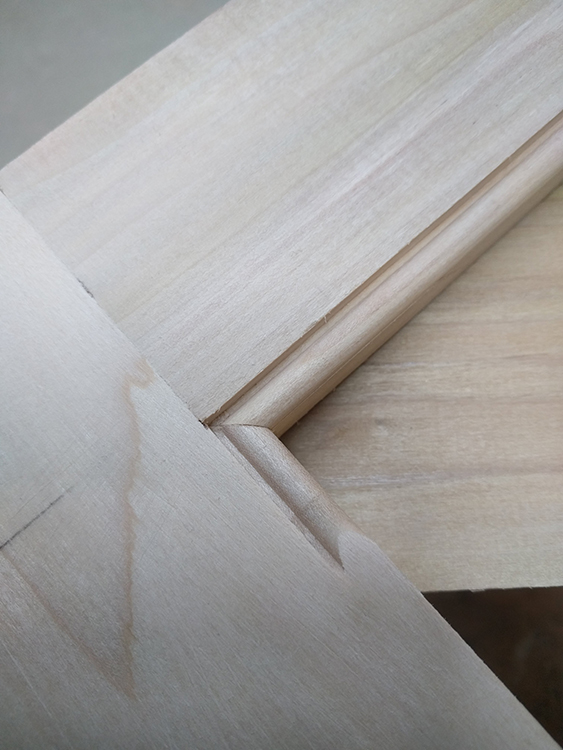


And, if you would like to go even further with using your router table to make the joints, then there’s a very good tutorial, click here where the chap has a very clear system of his own. He makes use of the Kreg 45 degree bit, which replaces my method of using a 45 degree blade in the table saw.
Mitred beaded face frames


